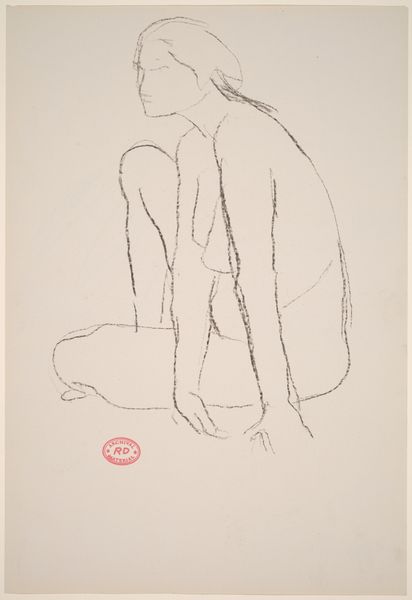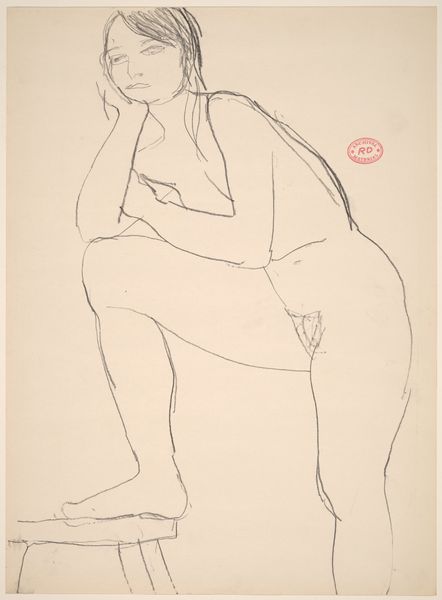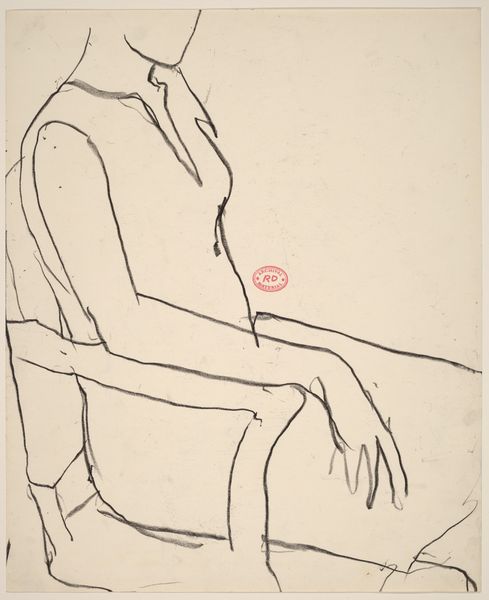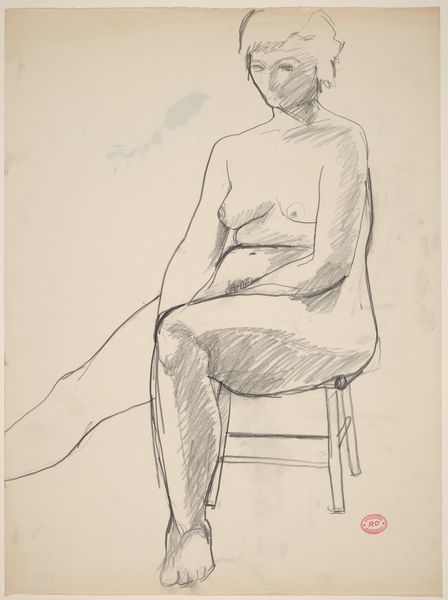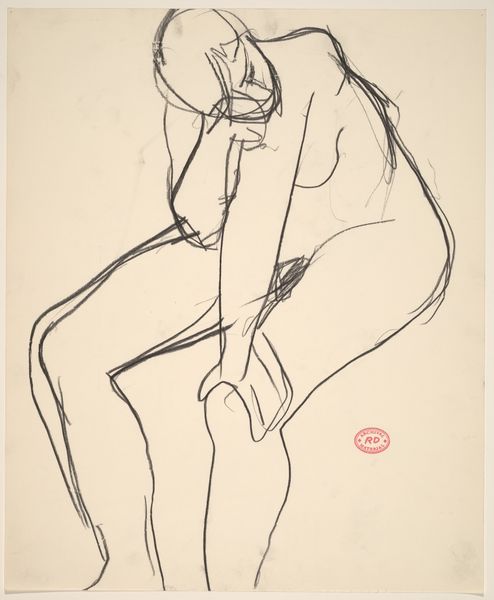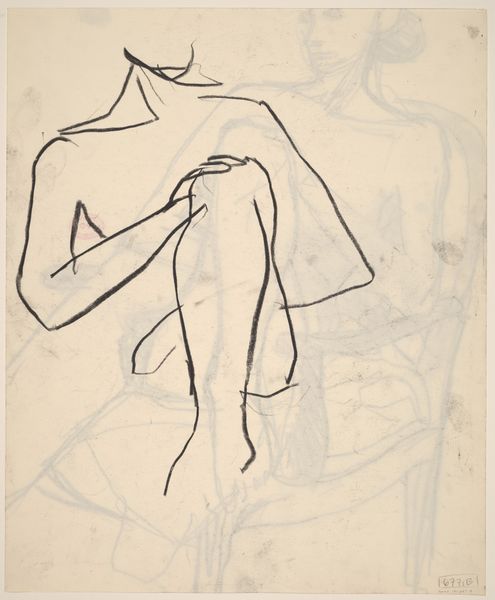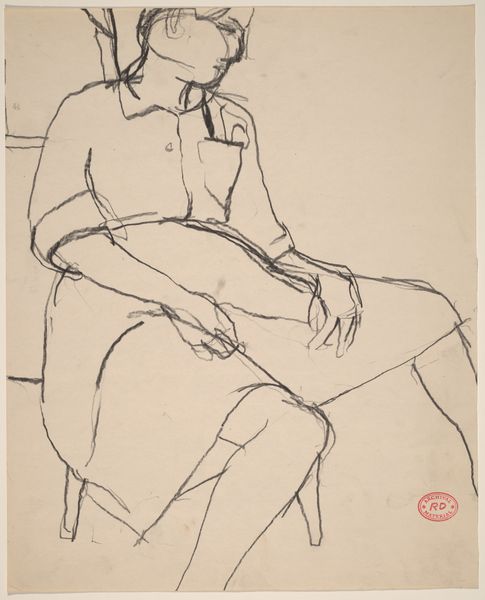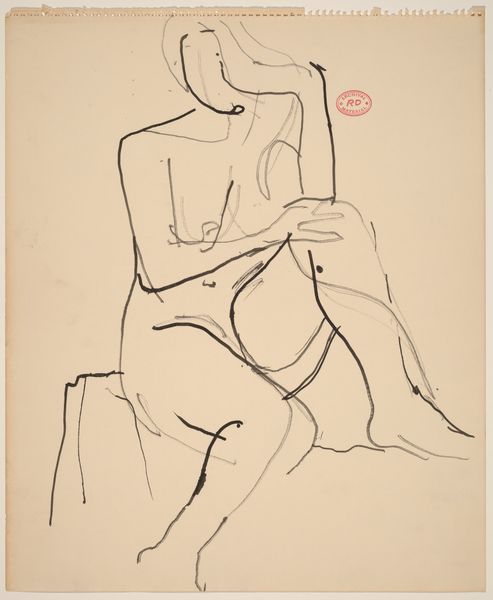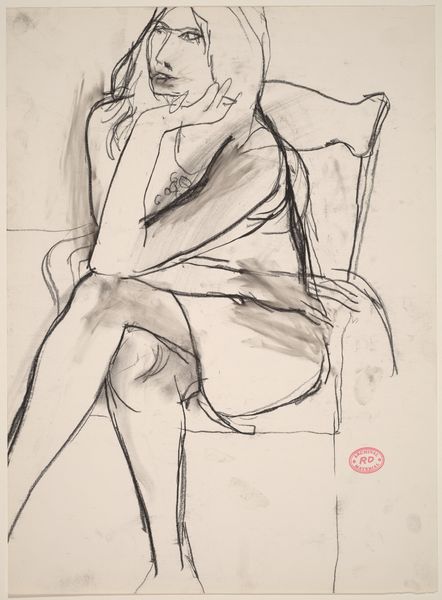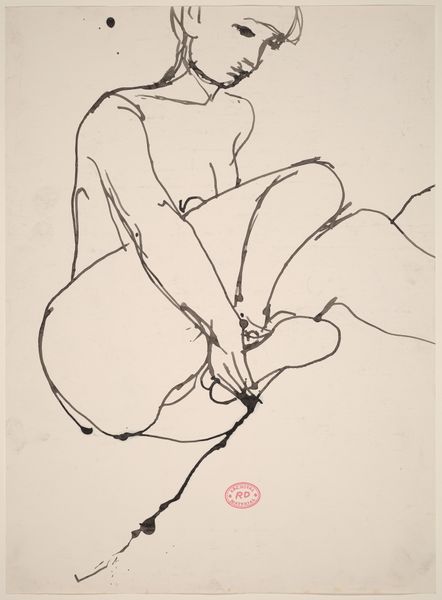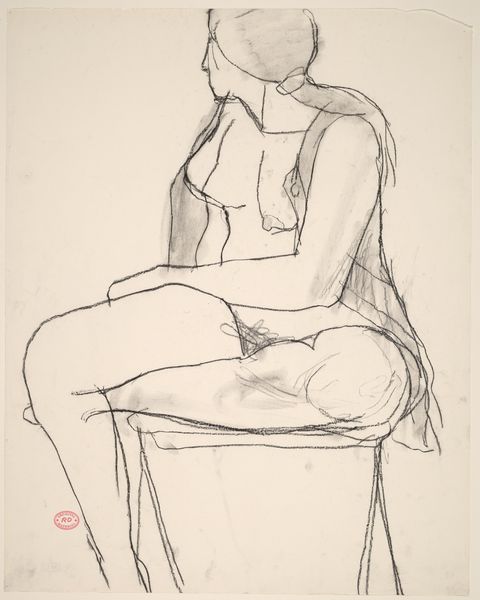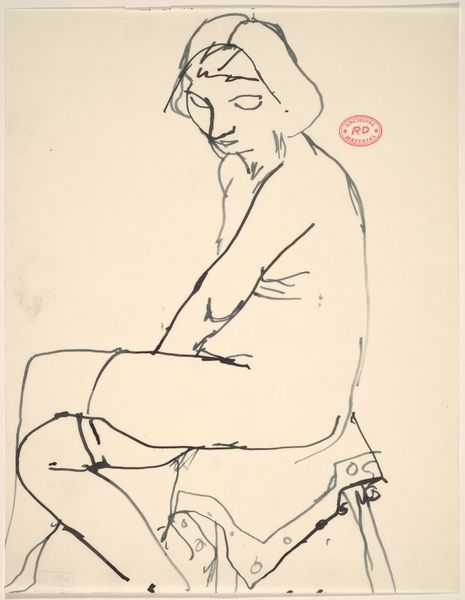![Untitled [seated woman in a skirt with a textured hemline] by Richard Diebenkorn](/_next/image?url=https%3A%2F%2Fd2w8kbdekdi1gv.cloudfront.net%2FeyJidWNrZXQiOiAiYXJ0ZXJhLWltYWdlcy1idWNrZXQiLCAia2V5IjogImFydHdvcmtzLzA1MzgzZDdhLTJkZDEtNGQ3My04NTliLWM5MGZlY2I3MDQ3NS8wNTM4M2Q3YS0yZGQxLTRkNzMtODU5Yi1jOTBmZWNiNzA0NzVfZnVsbC5qcGciLCAiZWRpdHMiOiB7InJlc2l6ZSI6IHsid2lkdGgiOiAxOTIwLCAiaGVpZ2h0IjogMTkyMCwgImZpdCI6ICJpbnNpZGUifX19&w=3840&q=75)
Untitled [seated woman in a skirt with a textured hemline] 1955 - 1967
0:00
0:00
drawing, gestural-painting, ink, pen
#
portrait
#
drawing
#
ink drawing
#
pen sketch
#
pencil sketch
#
figuration
#
gestural-painting
#
bay-area-figurative-movement
#
ink
#
pen
#
modernism
Dimensions: overall: 43.2 x 35.6 cm (17 x 14 in.)
Copyright: National Gallery of Art: CC0 1.0
Curator: Here we have an ink drawing by Richard Diebenkorn, made sometime between 1955 and 1967, titled “Untitled [seated woman in a skirt with a textured hemline]”. What are your initial thoughts? Editor: Well, first off, there’s a compelling directness. The simplicity, the bare minimum needed to convey this woman's pose—it’s rather haunting. Curator: It definitely captures a sense of immediacy. The lines are so sparse, almost like he’s tracing a fleeting memory. To me the bold strokes articulate volume in certain key points of the anatomy, a line becoming its own shadow. The perspective isn’t classically correct, yet that contributes to the character of the art, yes? Editor: Precisely. That skewed perspective you mention…it's emotionally charged. Makes one wonder about the context. Her posture hints at weariness, maybe even disillusionment. But why this specific rendering, this visual language? The overall impact is slightly tragic, the economy of the lines creating the most impactful message. The rough strokes composing the lower part of the skirt also convey visual weight. Curator: Agreed. Diebenkorn had this knack for extracting potent emotion through reduction. One notices in the sketch, for example, the skirt, with that rhythmic hemline, almost vibrates, imbuing a specific texture in the plain. This gives the work a sense of vitality but also, to your point, lends a certain sadness—that the figure can’t quite hold onto her form or place. It reminds me a bit of Giacometti’s drawings. Editor: Yes, like the residue of an attempt to grasp at something just beyond reach, maybe like something trying to convey a feeling of post-war-era longing. So simple in its medium, yet with so much complexity in its message. The absence of detailed facial features contributes to the dreamlike aura that invites reflection. It becomes about the universal experience of the female form, an icon of resilience and melancholy. Curator: Exactly, which explains why there is an open field of references and projection—what a beautifully economic artwork, full of open and fragile line work, almost as a sketch of being. Editor: There’s beauty in its vulnerability. A sketch indeed of life.
Comments
No comments
Be the first to comment and join the conversation on the ultimate creative platform.
